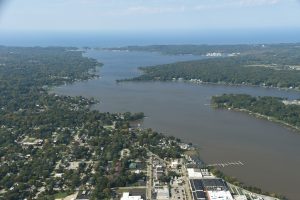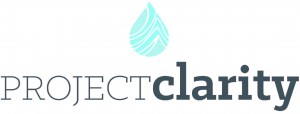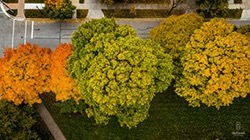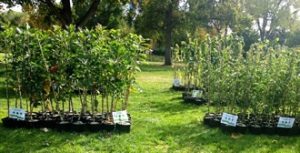In Holland, we believe that in order to become a vibrant, world-class community we must look at all aspects of our community. This includes the “Triple Bottom Line” and the economic, social, and environmental impacts we all have. Our City of Holland Sustainability Committee has created a seven-pillar framework with “lenses” to help us evaluate and make more sustainable choices. We have used this framework model as a way to identify the 2019 Hope College Sustainability Research Projects.
The Holland-Hope College Sustainability Institute (HHCSI) would like to formally recognize the following projects:
PDF Document: 2019 Sustainability Research Projects
This year’s research projects were designated with a “green ribbon” on their research poster at the annual Celebration of Undergraduate Research and Creative Performance. Original research by students on topics ranging from: exploring the effect of the Vietnam War on the Hope College campus to finding out about the value of trees in the City of Holland; from learning about environmental factors that influence the Macatawa watershed to discovering how project-based learning in STEM classrooms impacts local students’ attitudes toward school, were highlighted during the Celebration at Hope College on Friday, April 12, from 2:30 p.m. to 5 p.m. at the Richard and Helen DeVos Fieldhouse.
Framework Categories:
ENVIRONMENTAL ACTION & AWARENESS ![]()
For more information about the Framework visit:
www.hollandsustainabilityreport.org
For more information about the Annual Celebration visit:
https://hope.edu/academics/celebration-undergraduate-research/
The students and their projects represented all of the college’s academic divisions — the arts, humanities, social sciences, and natural and applied science.
The research and performance celebration, first presented in 2001, is designed to spotlight the quality and importance of student-faculty collaborative research at Hope. Undergraduate research is a hallmark experience for many Hope students and has been a teaching model used at the college for more than seven decades. Mentored collaborative research happens year-round, with approximately 300 students conducting faculty-supervised independent research during the academic year and 200 doing research over the summer, making Hope’s summer research program among the largest in the nation at a liberal arts college. Since faculty are active in scholarship year-round, many more students engage in research during the academic year.
Research has a long and storied history at Hope College. More than 100 years ago, biologist Dr. Samuel O. Mast designed research laboratory space for the college’s Van Raalte Hall, which opened in 1903. The late Dr. Gerrit Van Zyl, who taught chemistry at the college from 1923 to 1964, is widely recognized for developing research-based learning at Hope in its modern sense.
Hope has received recognition in a variety of ways through the years for its success in teaching through collaborative faculty-student research, and for the high quality of the research itself. For the past 16 years, since the category debuted, the “Best Colleges” guide published by U.S. News and World Report has included Hope on its listing of institutions that are exceptional for their emphasis on undergraduate research and creative projects. Hope is one of only 42 institutions of all types, and one of only 12 national liberal arts colleges, on the list in the 2019 edition.







 Hope College invites all community members to come to the
Hope College invites all community members to come to the  “Come when you can and leave when you must,” said Laura McMullen, program manager of the Celebration. “We recommend to allow yourself plenty of time to explore the posters. There are always more presentations than time.”
“Come when you can and leave when you must,” said Laura McMullen, program manager of the Celebration. “We recommend to allow yourself plenty of time to explore the posters. There are always more presentations than time.” Topics cover a wide range – from exploring the effect of the Vietnam War on the Hope College campus to finding out about the value of trees in the City of Holland, from learning about environmental factors that influence the Macatawa watershed to discovering how project-based learning in STEM classrooms impacts local students’ attitudes toward school.
Topics cover a wide range – from exploring the effect of the Vietnam War on the Hope College campus to finding out about the value of trees in the City of Holland, from learning about environmental factors that influence the Macatawa watershed to discovering how project-based learning in STEM classrooms impacts local students’ attitudes toward school.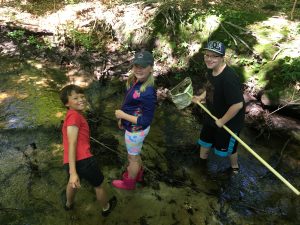
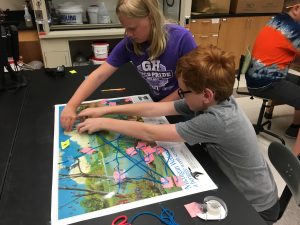 We’ve employed these principles in several new and revised camps at Hope’s Summer Science Camps: Exploring Ecosystems for students entering grades 3-8, EnviroCaching for grades 4-8 and Experimental Design for grades 10-12. (Thanks to support from the Environmental Education Division of ASME, International and to materials from the MSU Extension!)
We’ve employed these principles in several new and revised camps at Hope’s Summer Science Camps: Exploring Ecosystems for students entering grades 3-8, EnviroCaching for grades 4-8 and Experimental Design for grades 10-12. (Thanks to support from the Environmental Education Division of ASME, International and to materials from the MSU Extension!)
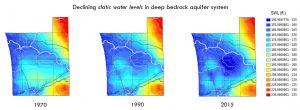
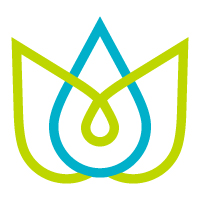
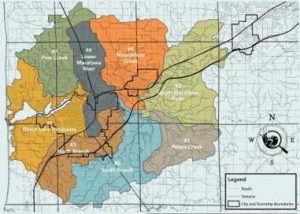 How can you tell if a lake is healthy? It’s not as simple as what’s in its water and on its shores.
How can you tell if a lake is healthy? It’s not as simple as what’s in its water and on its shores.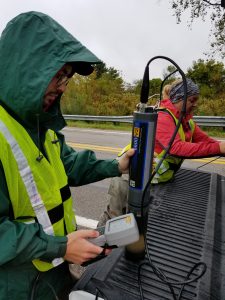 Researchers from the Annis Water Resources Institute at Grand Valley State University continue to monitor conditions around Lake Macatawa. They take readings at five locations around the lake several times a year, with additional support from Hope College and a number of volunteers.
Researchers from the Annis Water Resources Institute at Grand Valley State University continue to monitor conditions around Lake Macatawa. They take readings at five locations around the lake several times a year, with additional support from Hope College and a number of volunteers.